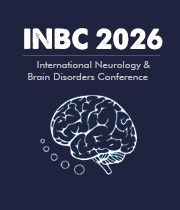Midbrain
The midbrain, also known as the mesencephalon, is a small yet important part of the brain responsible for information processing. It is located between the hindbrain and forebrain, and is composed of many different types of neurons. The midbrain is involved in various processes such as vision, hearing, movement, and emotion. The midbrain contains several important structures, such as the superior and inferior colliculus, the substantia nigra, the pedunculopontine nuclei, and the red nucleus. The superior colliculus is responsible for processing visual information, while the inferior colliculus is involved in auditory processing. The substantia nigra is one of the main structures of the midbrain and is involved primarily in the control of movement. It receives inputs from both the cortex and the cerebellum, and its outputs are then relayed to other structures involved in movement. The pedunculopontine nucleus is a group of neurons located in the midbrain and is involved in the control of motor behavior as well as eye movement. Its outputs are sent to the thalamus and then relayed to the cortical motor regions. The red nucleus is also located in the midbrain and is involved in motor coordination. It receives inputs from the cerebellum and contributes to the integration of motor behavior as well as posture. The midbrain is an important part of the brain that is responsible for the coordination of motor behavior, sensory processing, and relaying information between the cerebral cortex and the lower brain structures. Its importance in controlling movement and other processes makes it an integral part of the functioning of the human brain.

Joe Sam Robinson
Mercer University, United States
Robert B Slocum
University of Kentucky HealthCare, United States
George Diaz
Memorial Healthcare Systems, United States
Daniel Curry
Texas Children’s Hospital, United States
Zhenhuan Liu
Guangzhou University Chinese Medicine, China
Kiran Ghotra
Lake Erie College of Osteopathic Medicine, United States




Title : Atypical presentation of Juvenile myoclonic epilepsy in a 16-year-old female: A Case Report
George Diaz, Memorial Healthcare Systems, United States
Title : What we don’t know about hydrocephalus and It’s management
Daniel Curry, Texas Children’s Hospital, United States
Title : Artificial intelligence-driven DWI and FLAIR for the detection of early stroke changes: A systematic review
Shari L Guerra, The Medical City, Philippines
Title : Mapping neuroplasticity in occupational therapy: Evidence-based interventions with measurable neural outcomes
Jessica Marchant, Texas Woman's University, United States
Title : Non-pharmacologic management of orthostatic hypotension in inpatient rehabilitation: A quality improvement initiative
Laura Steakin, Rehabilitation Institute at Sinai, United States
Title : Non-pharmacologic management of orthostatic hypotension in inpatient rehabilitation: A quality improvement initiative
Mackenzie Weber, Rehabilitation Institute at Sinai, United States